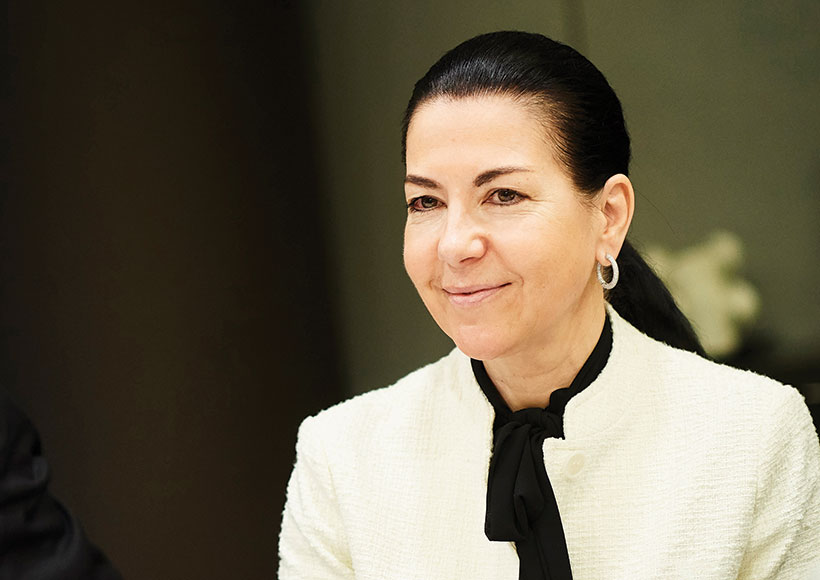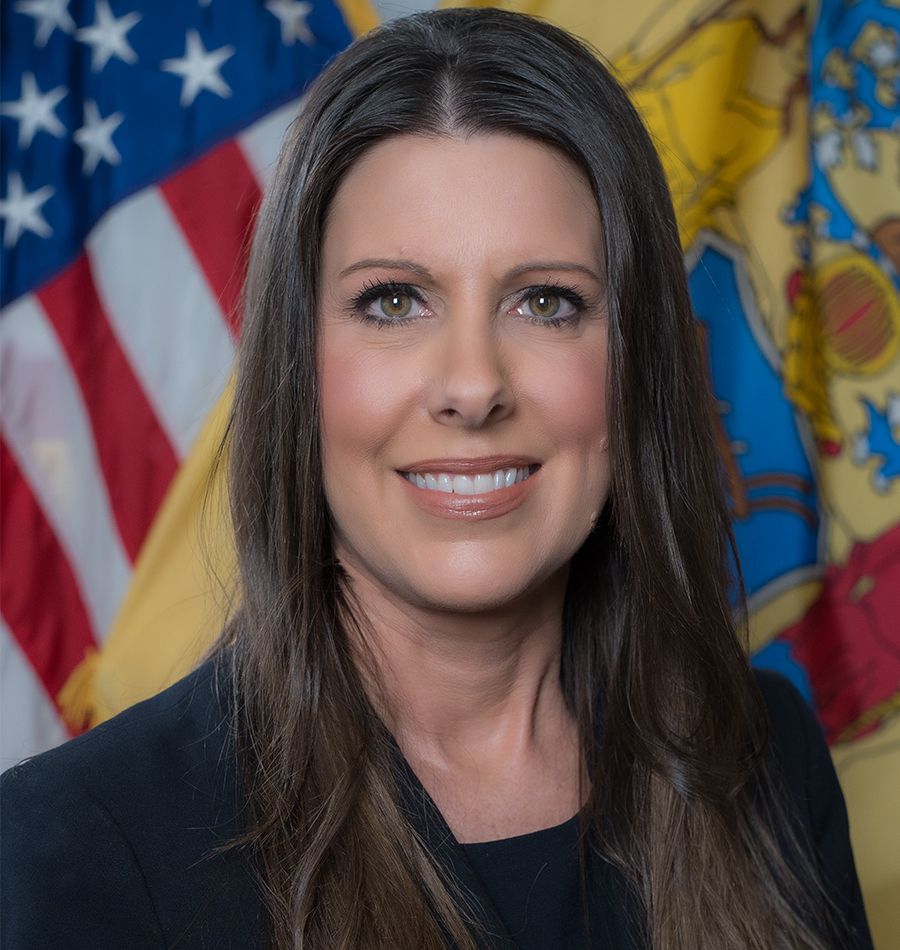// Interview: Michèle Coninsx
United Nations Assistant Secretary-General, Executive Director of the Counter-Terrorism Committee Executive Directorate (CTED), United Nations
JT: What are the latest trends in the global terrorist threat? And what are CTED’s priority areas of intervention in addressing them?
MC: The terrorist threat is global, so it affects nearly all United Nations Member States. With respect to one particular issue – the foreign terrorist fighter (FTF) phenomenon, which emerged in 2013-14 – we are currently faced with very specific challenges posed by returning and relocating FTFs and their family members. This problem is of a global nature, has many consequences, and will certainly remain a concern for the foreseeable future. Then we also have ISIL (Da’esh) and Al-Qaida, which continue to be active.
When we presented the related eighth report of the Secretary-General, in February 2019, we noted that, even though Da’esh had been defeated militarily and had lost much of its territory, it yet remained both a risk and a threat. The report noted that ISIL was transforming itself into a covert network, with a centralised command, and making significant use of information and communications technologies (ICT), including social media. Moreover, it was still being provided with the financial resources required to carry out large-scale terrorist attacks. Making use of ICT is something that ISIL has done over the years to inspire and help individuals to carry out attacks.
Different terrorist groups are active in specific regions and pose specific challenges. Boko Haram and Al-Shabaab are very active in, respectively, the Sahel, and in East Africa. Overall, it is a very complex threat and some terrorist groups have established significant links with other armed, criminal or terrorist groups.
The security situation in Burkina Faso has deteriorated very rapidly over the past few months and now threatens to move southwards. Because the terrorist threat is global in nature, we must tackle it at all levels; local, national, regional, and international.
JT: The global terrorist threat has evolved significantly over the past decade, both in scale and complexity. The current terrorism environment is marked, in particular, by increasingly sophisticated abuse of ICT, greater terrorist mobility, home-grown terrorism, and the actions of terrorists acting alone or in small cells. (Source: UN Counter Terrorism Committee, Law Enforcement page).
How is CTED helping the Member States to prevent and counter terrorism?
MC: CTED works under the direction and policy guidance of the Counter-Terrorism Committee (CTC), which is a subsidiary body of the United Nations Security Council. The CTC was established by Security Council resolution 1373 (2001) in the wake of the “9/11” attacks, which shocked the entire world. CTED works on all issues relating to international peace and security.
In December 2017, its mandate was significantly broadened and strengthened by the Council. We have a threefold task, which embraces assessment, analysis and provision of expertise. Our main task is assessment. We conduct assessment visits to Member States on the CTC’s behalf to monitor, facilitate and promote their efforts to implement the counter-terrorism-related resolutions of the Council.
As part of that assessment process, we make recommendations to the countries we visit, aimed at strengthening their ability to combat terrorism in accordance with the relevant Council resolutions and international standards. This process also helps States to assess their legal, institutional and practical counter-terrorism measures against the relevant international standards and to prioritise their follow-up actions.
Our assessments also provide an opportunity for us to identify good practices to be shared with other Member States, in cooperation with our implementing partners. Once we have concluded our assessment, it is then up to those implementing partners – such as the United Nations Office of Counter-Terrorism (OCT) and the United Nations Office on Drugs and Crime (UNODC) – to provide the technical assistance needed by States to implement the recommendations.
We analyse counter-terrorism trends, developments, as well as good and effective practices. This work is partly based on our findings in the assessed States, whose good practices must be exported elsewhere as soon as possible. We also work through our Global Research Network (established in 2015), which includes over 100 institutions, research centres and think tanks that work with us to raise awareness of new and emerging terrorism developments, trends and solutions. This cooperation helps us to understand what the major current problems and trends are and also helps us to ensure that good and effective practices are effectively promoted and replicated.
And, as I mentioned, our third task is to provide counter-terrorism expertise, whenever and wherever possible.
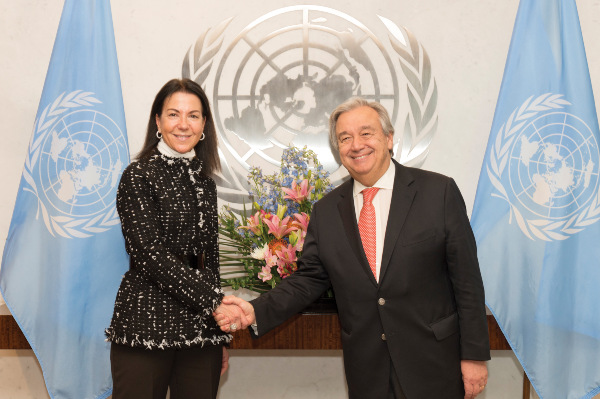
JT: The Security Council has repeatedly affirmed the need for counter-terrorism efforts to be both coordinated in nature and global in scope. And yet, in many regions, transnational law-enforcement cooperation appears to be at the developmental stage. Moreover, although States are increasingly integrating intelligence into law-enforcement operations, there’s still a need to develop effective mechanisms for the transfer of critical intelligence to law-enforcement agencies. What is CTED’s role in promoting and implementing effective cross-border cooperation and intelligence-sharing?
MC: Open and constructive dialogue, enhanced information exchange, and effective international and regional cooperation are all key to overcoming the global terrorist threat.
In its resolution 2322 (2016), the Security Council seeks to enhance international judicial and law-enforcement cooperation in order to strengthen the international response to terrorism. The resolution accords a central role to the CTC and CTED to identify gaps and trends in international cooperation among the Member States, facilitate capacity-building, and work with key partners to promote its implementation.
One of the areas in which enhanced cross-border cooperation is critical is the collection of digital data and evidence in order to bring terrorists to justice. The Council has noted the substantial increase in the volume of requests for digital data. Mindful of the challenges faced by States in their efforts to obtain electronic evidence from Internet Service Providers, CTED is currently engaged in a global initiative, jointly implemented with UNODC and the International Association of Prosecutors, aimed at strengthening the capacity of central authorities, prosecutors and investigators to preserve and obtain electronic evidence in the context of cross-border counter-terrorism investigations.
A key project output is the recently published Practical Guide for Requesting Electronic Evidence Across Borders, which was developed through a consultation process that involved numerous stakeholders, including private-sector entities, and is being used to train officials around the world.
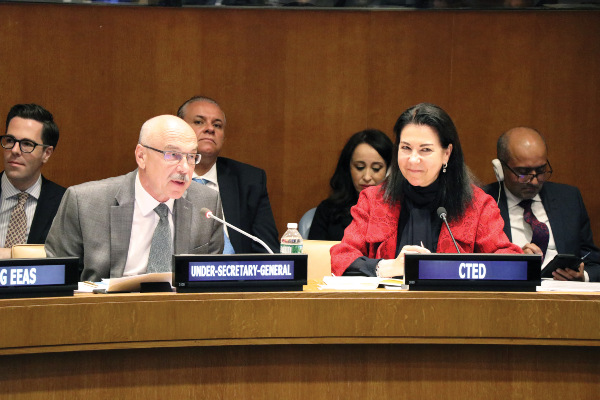
States face growing challenges in their efforts to adequately assess the risks posed by, and needs of, individuals suspected or convicted of terrorism offences.
JT: CTED also works to help law-enforcement agencies develop effective operational countermeasures and strategies.
What measures and strategies does CTED recommend to States with respect to suspected and imprisoned terrorists (especially given the risk of radicalisation and the challenges encountered in trying to secure their rehabilitation and reintegration)?
MC: The UN Member States are increasingly concerned at the potential risks posed by in-prison radicalisation, particularly in the context of returning or relocating FTFs who enter the criminal justice system.
States face growing challenges in their efforts to adequately assess the risks posed by, and needs of, individuals suspected or convicted of terrorism offences, supporting their rehabilitation and reintegration, and preventing further radicalisation to terrorism among the general prison population.
Addressing these challenges, often in the context of over-crowded and under-resourced prison systems, poses new and complex demands on national penitentiary systems. As noted by the Council in its resolution 2396 (2017), prisons are potential incubators for radicalisation to terrorism and terrorist recruitment, but they can also serve to rehabilitate and reintegrate prisoners, where appropriate.
The Addendum to the guiding principles on foreign terrorist fighters (2018), adopted by the CTC in December last year, provides useful guidance for the Member States in these areas. It underlines the need to adequately assess the risks and needs of prisoners; put in place a variety of gender- and age-appropriate programmes to support their disengagement, rehabilitation and reintegration; and establish post-release measures.
It also highlights the importance of involving a wide range of actors in those efforts, including local community-based service providers, civil society and families, as appropriate. It stresses that States should ensure humane and dignified conditions of detention and establish effective oversight mechanisms, taking into consideration, as appropriate, the UN Nelson Mandela Rules.
In July 2018, CTED identified a number of approaches taken by States to manage the risks of in-prison radicalisation. And in our recent Trends Alert on “Concern at potential risks posed by the forthcoming release of imprisoned FTFs”, we highlight the lack of evidence as to the effectiveness of existing rehabilitation and reintegration strategies.
There is no “one-size-fits-all” approach. It’s essential to take into consideration the local context, as well as the distinct needs and circumstances of each individual person, including women and children. Here, I would note that CTED is currently involved in a joint UN project to help three States design and implement tailored responses.
CTED will also continue to engage on these issues with Member States, other UN entities, international and regional organisations, civil society, and the research community to identify trends and technical assistance needs and to improve information-sharing on good practices.
[About the forthcoming release of imprisoned foreign terrorist fighters] We highlight the lack of evidence as to the effectiveness of existing rehabilitation and reintegration strategies.
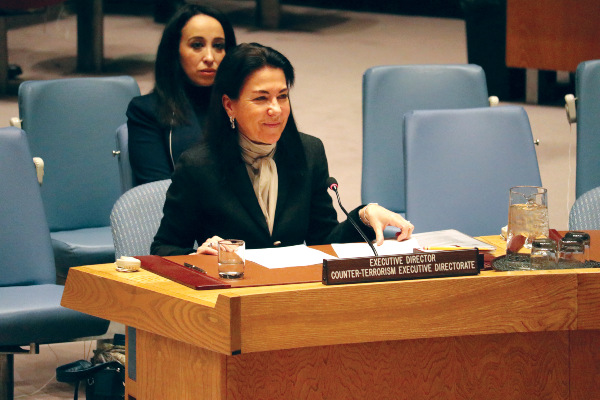
JT: In July 2015, the CTC held a special meeting on stemming the flow of FTFs, which resulted in agreement on an initial set of guidelines for Member States (the “Madrid Guiding Principles”). In December 2018, the CTC adopted the “Addendum to the guiding principles on foreign terrorist fighters”.
What guidance does the Addendum offer with respect to justice systems?
MC: In 2015, the first set of 35 Guiding Principles was agreed upon. Then, the need was to stem the flow of fighters to the conflict zones. But a few years ago, we realised that we had a reverse problem: how to deal with those who were returning or relocating from the conflict zones, with or without terrorist intent. The Addendum addresses a number of related issues.
With respect to justice systems, it provides guidance on updating national legislation to address FTF-related preparatory and inchoate acts; ensuring that appropriate action is taken in cases involving children; ensuring that the competent authorities are capable of handling information and evidence collected through special investigative techniques; the gathering of digital data and evidence and financial intelligence; developing and implementing prosecution, rehabilitation and reintegration strategies and protocols, including for cases involving children; addressing the risk of terrorist radicalisation recruitment in prisons and ensuring that prisons are places of rehabilitation and reintegration; and, finally, strengthening international cooperation to prevent, investigate and prosecute terrorist acts.
The Addendum also provides guidance for ensuring that new tools and strategies aimed at enhancing border protection and information-sharing are utilised in a manner that fully protects and promotes the rule of law and human rights. For example, it recommends that judicial oversight and redress be provided in the contexts of API (Advance Passenger Information) and PNR (Passenger Name Records), biometric identification, and watch lists and databases. It also recommends that special frameworks and safeguards be put in place in situations involving children.
JT: The Addendum also seeks to ensure that all countries have the right tools to identify the threat posed by FTFs, including using new techniques. How does it address the related privacy and data-protection issues? How do you protect children?
MC: The Addendum includes a special focus on the protection of children and women. When we talk about women, we tend to talk about them as victims. However, they can play a number of other roles, whether as supporters, facilitators, inciters or recruiters. They can also play a role as potential agents for preventing terrorism.
In the case of children, the first concern is to develop long-term, tailored, protective measures. But this cannot exclude the fact that children can also be involved in terrorist activity. How you manage this risk and deal with such children in your own jurisdiction is a very complex issue.
All measures taken by States for the prosecution, repatriation, rehabilitation and reintegration of women and children should be in compliance with international law and human rights law, as well as the relevant international standards and General Assembly and Security Council resolutions.
The Addendum also addresses the protection of critical infrastructure and “soft” targets against terrorist attacks. This is a pressing issue, as demonstrated by the recent Christchurch and Sri Lanka attacks.
JT: What are your expectations regarding the evolution of the terrorist threat in the short-to-medium term?
MC: The problem of returning and relocating FTFs will not be resolved in the short-term, in part because of its global extent. FTFs travelled to the conflict zones from more than 100 States. So that is something we shall have to continue to follow very closely. Moreover, ISIL and Al-Qaida will continue to be active, perhaps in different forms. We also continue to see changes in the operational methods used by Boko Haram and Al-Shabaab.
Another major concern is terrorists’ extensive use of ICT. And we’ve also recently alerted the wider community to potential terrorist use of unmanned aircraft systems (or “drones”).
All these challenges require that we be not only active and rapidly reactive, but also proactive. We must have our radar constantly “on”, so to speak. A great deal has been achieved, and many measures continue to be taken. However, there remains a lot to be done. There is no room for naivety or complacency. We must remain alert.
//
Michèle Coninsx took up her current functions at the United Nations, at the level of Assistant Secretary-General, in November 2017. Prior to assuming this position, Ms. Coninsx had served as President of Eurojust – the European Union agency tasked with addressing judicial cooperation in criminal matters – between 2012 and 2017, having previously served as its Vice-President for five years. Before joining Eurojust, she had served as a Federal Prosecutor in Belgium, dealing with terrorism and organised crime. Ms Coninsx has two master’s degrees – one in Law and one in Criminology – and holds the title of Honorary Fellow of Law and Criminology at the Vrije Universiteit Brussel.

